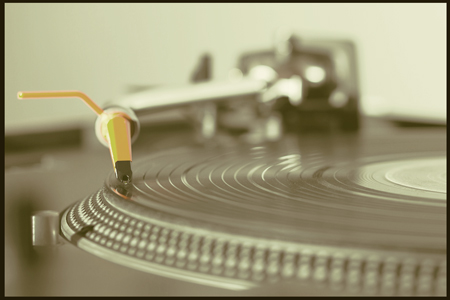
Over the past decade, vinyl records have experienced a stunning resurgence in the music industry, a trend that has gone from niche interest to mainstream phenomenon. While the digital age ushered in the dominance of streaming platforms and downloadable music, vinyl has become a symbol of nostalgia, quality, and an undeniable connection to music as an art form. The steady increase in vinyl sales over the years is not only reshaping how music is consumed but also revitalizing the vinyl manufacturing industry, which many thought would be a relic of the past.
Vinyl Sales: The Numbers Tell the Story
In 2006, vinyl was in a steep decline. According to the Recording Industry Association of America (RIAA), vinyl accounted for just a fraction of music sales, with only around 900,000 units sold in the United States that year. Fast forward to 2023, and the story has changed dramatically. The RIAA reported that vinyl sales in 2022 reached a staggering 41 million units—making it the highest number of vinyl records sold in the U.S. since 1988. For comparison, CD sales that same year totaled 58 million units, but the gap has been narrowing in recent years, showcasing the ever-growing popularity of vinyl.
In fact, vinyl revenue now consistently outpaces digital download revenue, a shift that highlights how music consumption is moving beyond purely digital formats. In 2022, vinyl sales generated $1.2 billion in revenue, compared to $482 million from digital downloads. This marks a key milestone in an era where physical formats seemed to be on their way out.
Looking at the trend over the last few years, vinyl sales have consistently increased by double digits annually. From 2020 to 2021, vinyl sales surged by 51% in the U.S., and even amid the digital dominance of platforms like Spotify and Apple Music, the tactile experience of vinyl continues to appeal to both older collectors and new generations discovering the format.
What’s Driving the Vinyl Revival?
Several factors are contributing to this remarkable comeback. First and foremost, there’s the physicality of vinyl itself—its large album artwork, its tangible, sensory nature that makes the act of playing a record feel like an event. In an age dominated by digital media, vinyl offers a nostalgic escape and a more immersive experience. The sound quality of vinyl, often described as warmer and more dynamic, is also a big selling point for audiophiles and casual listeners alike. Although vinyl records do require more care and attention—such as regular cleaning and proper storage—many listeners argue that the richness of the sound is worth the effort.
Moreover, vinyl appeals to collectors, with special editions, limited pressings, and colored vinyl becoming highly sought after. For artists, releasing albums on vinyl has become a way to create a premium product, one that goes beyond streaming numbers and digital downloads. As a result, more and more artists are embracing vinyl as a format for both new releases and reissues of classic albums.
Another key factor driving the vinyl boom is the resurgence of independent record stores. These stores have become community hubs for music lovers and a place where vinyl culture thrives. Record Store Day, an annual event first launched in 2008, has become a massive celebration of vinyl, with exclusive releases and special performances drawing thousands of fans each year. For many, vinyl has become more than just a medium for music—it’s a lifestyle.
Vinyl’s Place in the Music Business Today
While vinyl’s return has been undeniably impressive, it is important to put its sales in perspective. Despite its growth, vinyl still represents a smaller share of overall music revenue compared to streaming. In 2022, streaming accounted for 83% of total music revenue in the U.S., compared to just 7% from physical formats (which includes vinyl, CDs, and cassettes). However, vinyl’s popularity isn’t just a passing trend. It’s a testament to the resilience of physical media and the lasting impact of music’s cultural and artistic value.
As the industry moves forward, vinyl is expected to continue its upward trajectory. According to the latest RIAA data, the demand for vinyl is outpacing that of CDs for the first time in decades, and manufacturers are struggling to meet the demand. In response, the industry is investing in new pressing plants and advanced technologies to keep up with the growing market.
A Full Circle Moment for Music
The revival of vinyl is a reminder that the music business is far from static. The digital revolution may have changed how we consume music, but the analog magic of vinyl is proving to be more than a nostalgic relic. As vinyl sales continue to rise, the music industry is witnessing the resurgence of an old-school format with new-school relevance. Whether for the love of the sound, the artwork, or simply the experience of listening to music in a more intentional way, vinyl has found its place in a modern world that values both the past and the present.


Comments are closed.